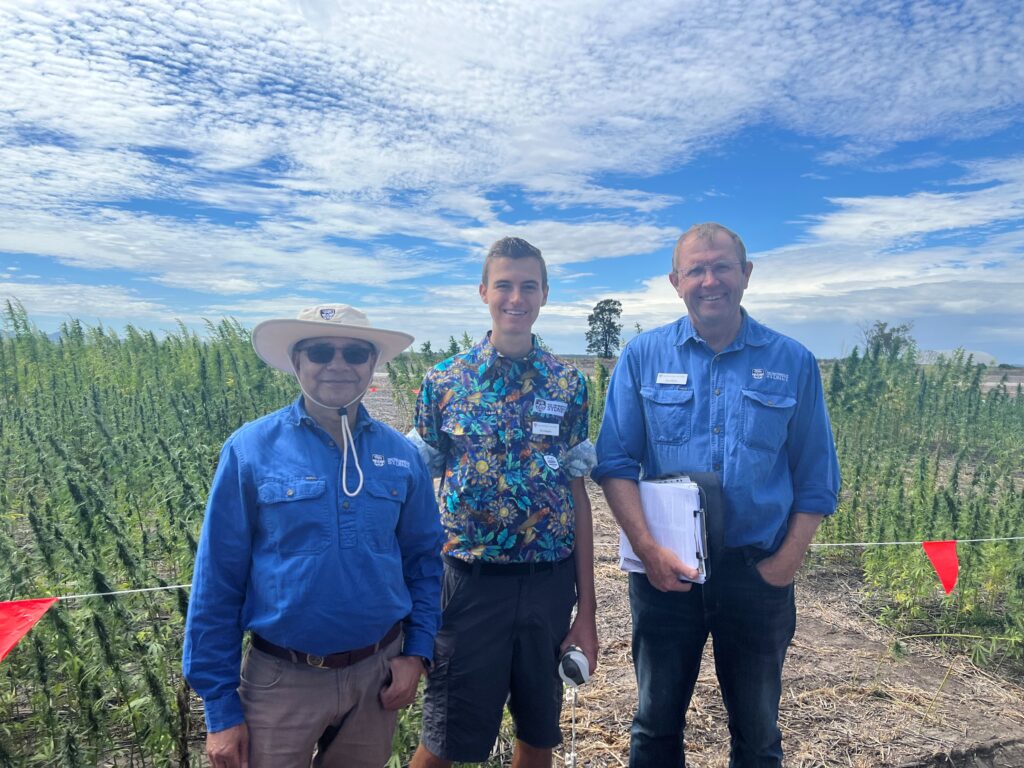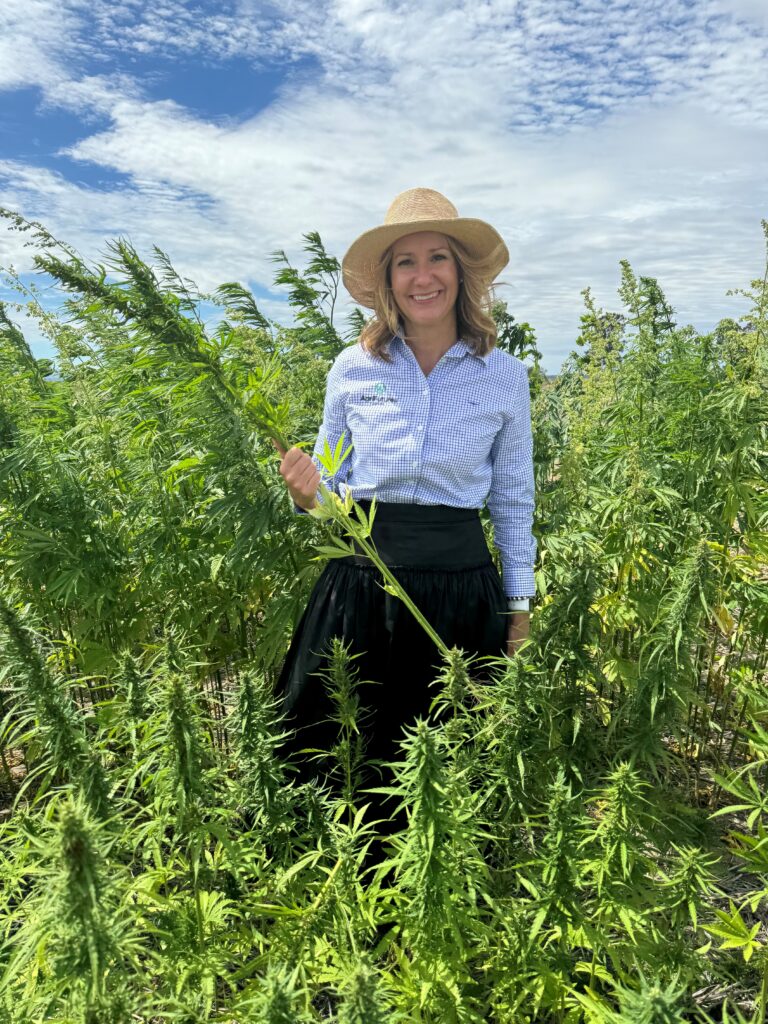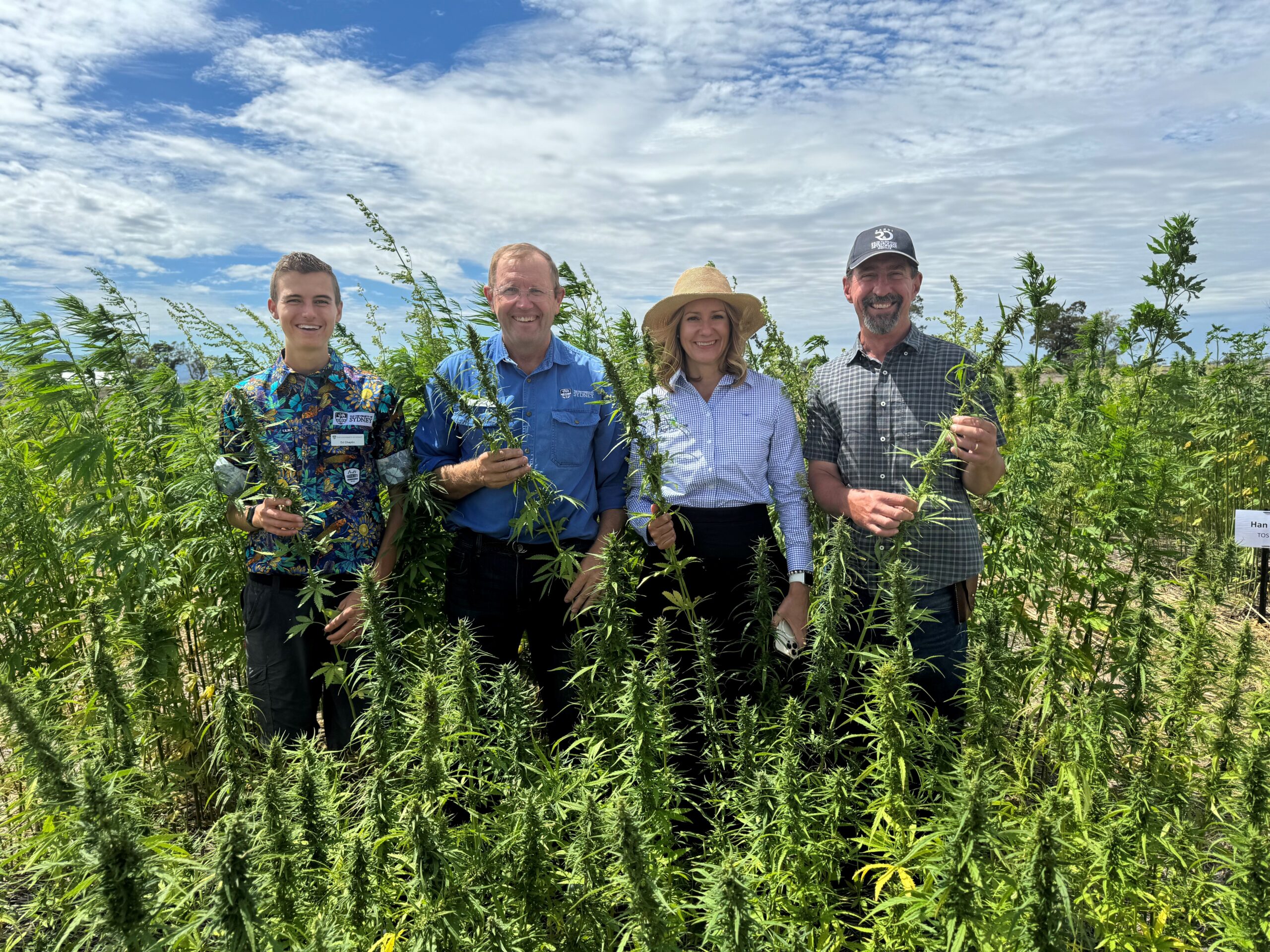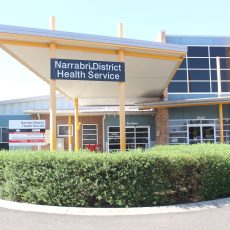It’s hard not to be impressed by the diverse characteristics of industrial hemp.
Marijuana’s sober cousin, also known by its Latin counterpart: Cannabis sativa – translation: “useful hemp”, is a rather industrious crop.
AgriFutures Australia and The University of Sydney, Narrabri campus welcomed farmers and plant breeding enthusiasts from all over Australia to their second Narrabri Industrial Hemp Variety Trial (IHVT) Field Day last Thursday to showcase just that.
A group of 50 with interests in hemp production travelled from as far as South Australia, Queensland, and Victoria to come and learn about the industrial crop which is gaining attention in
Australian agriculture and the potential global annual gross production value of over $18 billion by 2027.
The versatile crop has many remarkable qualities and is considered an emerging industry in Australian agriculture, with industrial hemp being valued for its seed, hurd, and fibre.
As well as being sustainable, it’s highly beneficial to human health as well as for raw materials for building, composite materials, and textile products.
AgriFutures Australia considers that growing it alongside traditional crops like cotton and wheat could be a key to the success of the rising industry, estimating that the crop will require two to six megalitres of water per hectare.
The IHVT trial program is run with supporting organisations and universities in each state and aims to support the expansion of the Australian industry through $2.5 million of research focused on improved hemp seed varieties, production methods, industry sustainability, and the development of hemp-based products.
Nine sites that fit three climatic conditions were chosen across Australia and the site at Sydney University’s Narrabri campus is one of four in central Australia.
When I arrived at the Narrabri campus hemp field day, we all boarded the bus and headed to the trial site where we were greeted by a lush, happy and hoppy-smelling field with 12 varieties of industrial hemp.
Along with farmers, enthusiasts, and the literal cream of the crop when it comes to plant breeders and scientists, I was ready to be educated.
Associate Professor Guy Roth, director of Northern Region Agriculture at The University of Sydney’s Narrabri base headed the project with the help of research assistant Ed Chaplin for the second year of their industrial hemp trial.
He was pleased to welcome the field day attendees and hoped to provide answers to critical questions that potential growers might have.
“It was great to have everyone out there,” said Dr Roth.

Senior plant breeder Dr Kedar Adhikari, Associate Professor Guy Roth and research assistant Ed Chaplin on the Narrabri IHVT site.
“These kinds of field days are where a lot of the science and practicalities come together, there’s a lot of genetic diversity here in the 12 varieties, and we see it mixed into our complex farming system.
“There are people here from all around Australia with a lot of expertise, both in growing, but also post-farmgate processing, whether that’s for fibre or building materials.”
The 12 varieties grown on the site are from Poland, France, Canada, and Australia and have been thriving in the past year’s conditions, and research assistant Ed Chaplin was pleased with this year’s progress.
“It’s been brilliant to branch into a new area – industrial hemp has only been grown on this site one or two times before, so it’s a fairly new thing for us here,” said Mr Chaplin.
“We’re all pleased with how it went this year. The crop looks absolutely fantastic, especially compared with last year, and after planting it in what we considered to be non-ideal planting conditions during the hot season.”
There were just under 2500 hectares of industrial hemp planted by more than 500 license holders across Australia in the 2022-23 season, and the industry is expected to grow in coming years with a set goal for domestic production to have a gross value of more than $10 million per annum by 2026.
Both AgriFutures Australia and Sydney University, Narrabri representatives were feeling positive about the future of industrial hemp growing across Australia, as interest in the field day had doubled in numbers since last year.
The spirit of the day was “community”, and a coming together of forward-thinking individuals who can see the immense potential in this crop of the future.
Considering all its diverse uses, the first thing I was surprised to learn is that the Australian hemp industry is still in its infancy.
Each state and territory has its own set of legislation and regulations around the possession, production, processing, and sale of the highly regulated crop and its products.
The widespread criminalisation of tetrahydrocannabinol (THC) content and its psychoactive effects prevented the production of any form of cannabis sativa, but industrial hemp – as referred to earlier as the “sober cousin” – is actually very low in THC, with less than 0.5 per cent of the compound.
In 2017 when legislation changed to allow hemp to be available for human consumption it was a game changer for the industry and helped surge it forward.
AgriFutures Australia facilitates the first consistent research into the industrial hemp variety performance across Australia, with a key objective to encourage growers and provide individual recommendations about varieties and times of sowing across diverse geographic regions.
Dr Olivia Reynolds, senior manager of Emerging Industries at AgriFutures Australia was there for the last of the field days, and was happy to break down the many benefits of industrial hemp as a food and fibre crop for first-time learners like myself.

AgriFutures Australia’s Dr Olivia Reynolds.
“The appeal of industrial hemp is not just its multiple uses as grain or fibre, but it also has great sustainability credentials – such as carbon sequestration,” said Dr Reynolds.
“It improves soil health, and we’re hearing anecdotes from growers around their use in cotton systems, for example, subsequently planting cotton after hemp and seeing real improvements, so there are a lot of other benefits that we see.”
The quick-growing crop will get you a yield in as little as 90 days, and multiple selling times each year are possible, especially as you go further north.
Industrial hemp is drought tolerant once it’s established, but hemp will give you what you put into it, so it’s always important to get that establishment piece right.
It also has extensive fibre possibilities, from pet bedding, as insulation and bricks, and even as a replacement to mdf in timber-based products.
“You can now replace wooden posts with hemp posts, – which is attractive because hemp is a fire retardant, it is also resistant to most termite species in Australia, – apart from a veracious one in the north,” said Dr Reynolds.
“I love a teaspoon of hempseed in my cereal every day, it’s high in protein, omegas 3 and 6, and has a lot of nutritional benefits.
“It can be used in companion animals such as horses, and we’re going to be trialling it in Wagyu beef in western Australia to see how the growth and performance of the cattle that have been fed that.”
The field day also featured an afternoon agronomy lesson and an ABC Rural Country Hour live broadcast from the university’s plant breeding institute campus, with experts covering topics on hemp as well as digital agriculture and new technologies at the Narrabri site.
NSW Department of Primary Industries plant pathologist Dr Karen Kirkby attended the field day and has been an advocate for strengthening research and encouraging local interest in the emerging industry.
“It’s a fabulous opportunity for growers, investors, and anyone interested in the hemp industry to come and learn from those who are here, and to gain knowledge on the different varieties because there are so many that will suit different areas,” said Dr Kirkby.
“I really hope the growers that are out here find the answers to the questions that they’ve had.
“It’s good that they can have a place to come and gather all the information and gain the contacts so they can pick up the phone and talk to anyone that might be able to answer their questions.
“Hemp is awesome.”

Department of Primary Industries plant pathologist Dr Karen Kirkby and plant physiologist Sarah Purdy.










